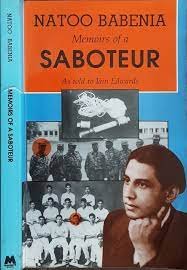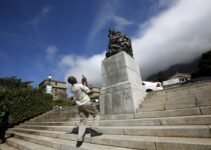This is a brief insight into South Africa’s diverse and vibrant history on March 28, a mosaic formed with strands of success, hardship, and perseverance. As we delve into the past of South Africa, we embark on a voyage through the ages, manoeuvring through the intricacies that have moulded the country we recognize today.

1996: Mandela reshuffles the cabinet
Chris Liebenberg, the finance minister, resigned for personal reasons on April 4, 1996. As a result, President Nelson Mandela announced changes to the government. Trevor Manuel replaced Liebenberg, Alec Erwin replaced Manuel, and Jay Naidoo replaced Pallo Jordan. Gill Marcus became the deputy minister of Finance.
1996: Inkatha Freedom Party (IFP) commemorates Shell House shootings
Thousands of Inkatha Freedom Party (IFP) supporters marched through the streets of Johannesburg to mark the anniversary of the 1994 Shell House shootings, during which eight IFP supporters were killed by the security guards at the African National Congress (ANC) Shell House headquarters. The threat of demonstrators defying a government ban on the carrying of traditional weapons, while police had stated their intention to enforce the ban, raised fears of clashes between police and demonstrators. In the face of the huge crowds, the police relented and allowed demonstrators to brandish banned weapons.
1994: 19 die at Shell House massacre
African National Congress (ANC) security guards at Shell House killed nineteen Inkatha Freedom Party (IFP) members following a tip-off that IFP marchers were planning to attack the building. The Nugent Commission of Inquiry on what actually caused the shooting rejected this explanation. The commission’s conclusion was that the shooting by ANC guards was unjustified. Shell house in Jeppe Street, Johannesburg, was home to the ANC after the organisation was unbanned.
1982: Armscor’s Chairman announces the production of a record-breaking South African artillery system
On March 28, 1982, the Chairman of Armscor announced that South Africa had developed a 155mm artillery piece that outranged it’s counterparts of a similar calibre by at least 50%. The development of the G5 Howitzer was the direct result of the arms embargo imposed on South Africa due to its Apartheid policies and due to the performance of the South African military hardware in action, especially artillery and air support. The hardware shortcomings hampered the army’s effectiveness, specifically in terms of the range of artillery utilised. This shortcoming was most evident during the Battle of Cuito Carnivale, when South African artillery forces lacked the range to accurately hit their targets. The South African Arms Corporation, (Armscor) therefore set out to develop a 155 mm artillery piece that could engage enemy forces at considerable distance and was highly mobile. The reason for this choice of calibre was that smaller calibres lacked the penetrating power and range, and the weight of the projectiles of larger calibres reduced their mobility. The initial design was strongly influenced by the work of a Canadian engineer Gerald Bull. However, the South Africans refined the design to such an extent, that the finished product bore very little resemblance to Bull’s initial concept.
1979: The World Campaign against Military and Nuclear Collaboration is launched
The World Campaign against Military and Nuclear Collaboration with South Africa was launched on March 28, 1979, in Oslo, Norway. It was supported by the UN and several Heads of State and government. Ambassador Abdul Samad Minty served as its Director.
1966: The trial of Fred Carneson, a listed communist begins at the Supreme Court in Cape Town
Fred Carneson, a communist and former editor of the New Age, was sentenced to five years and nine months of imprisonment for three counts of sabotage and contravention of the Suppression of Communism Act. He was released after serving nearly seven years and moved to London to join his family. He was later employed at the National Union of Teachers. In 1991, he returned to South Africa and became a local councillor and Treasurer of the SACP in the province. He passed away on September 8, 2000, in Cape Town.
1960: Oliver Reginald Tambo leaves South Africa for exile
Oliver Reginald Tambo left South Africa after the Sharpeville massacre on the instruction of the ANC. He continued his struggle from exile, while his wife and children joined him later in London. They returned to South Africa in 1990.
1924: Natoo Babenia is born
Natoo Babenia was a political activist in India and South Africa. He fought against British rule and later the Apartheid government. Babenia was a member of the African National Congress, South African Communist Party, and Umkhonto We Sizwe. He spent sixteen years on Robben Island and passed away on 1 January 1999 at the age of 75.
1658: First enslaved people arrive in Cape Town
On March 28, 1658, the Dutch East India Company’s (VOC) ship, the Amersfoort, dropped anchor in Table Bay. In her hold, she had a human cargo: 174 slaves. This was the first shipment of slaves to arrive in South Africa, and marked the beginning of almost 200 years of slave trade at the Cape. The Amersfoort was not a slaver but a merchant vessel. She was on a journey from the Netherlands to the Cape when she came across a Portuguese slaver, heading to Brazil. The Portuguese slaver was coming from the Angolan coast, where they had picked up 500 slaves. The Amersfoort intercepted the slaver and captured half her cargo, taking 250 slaves as a bounty prize.



